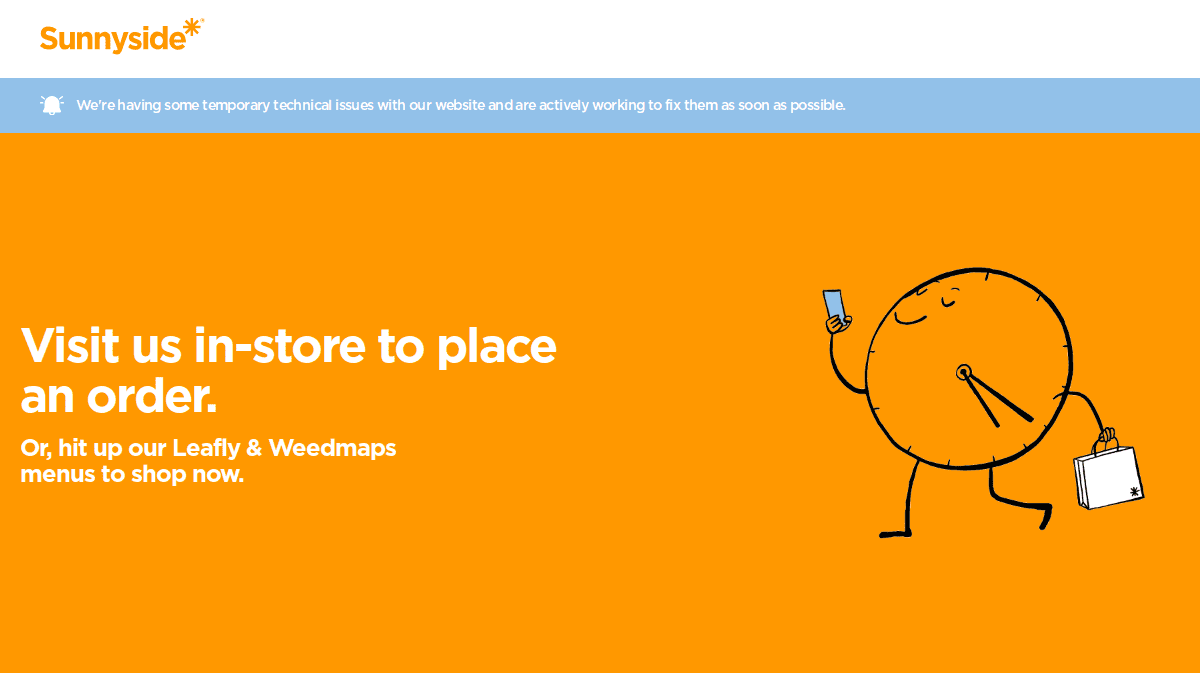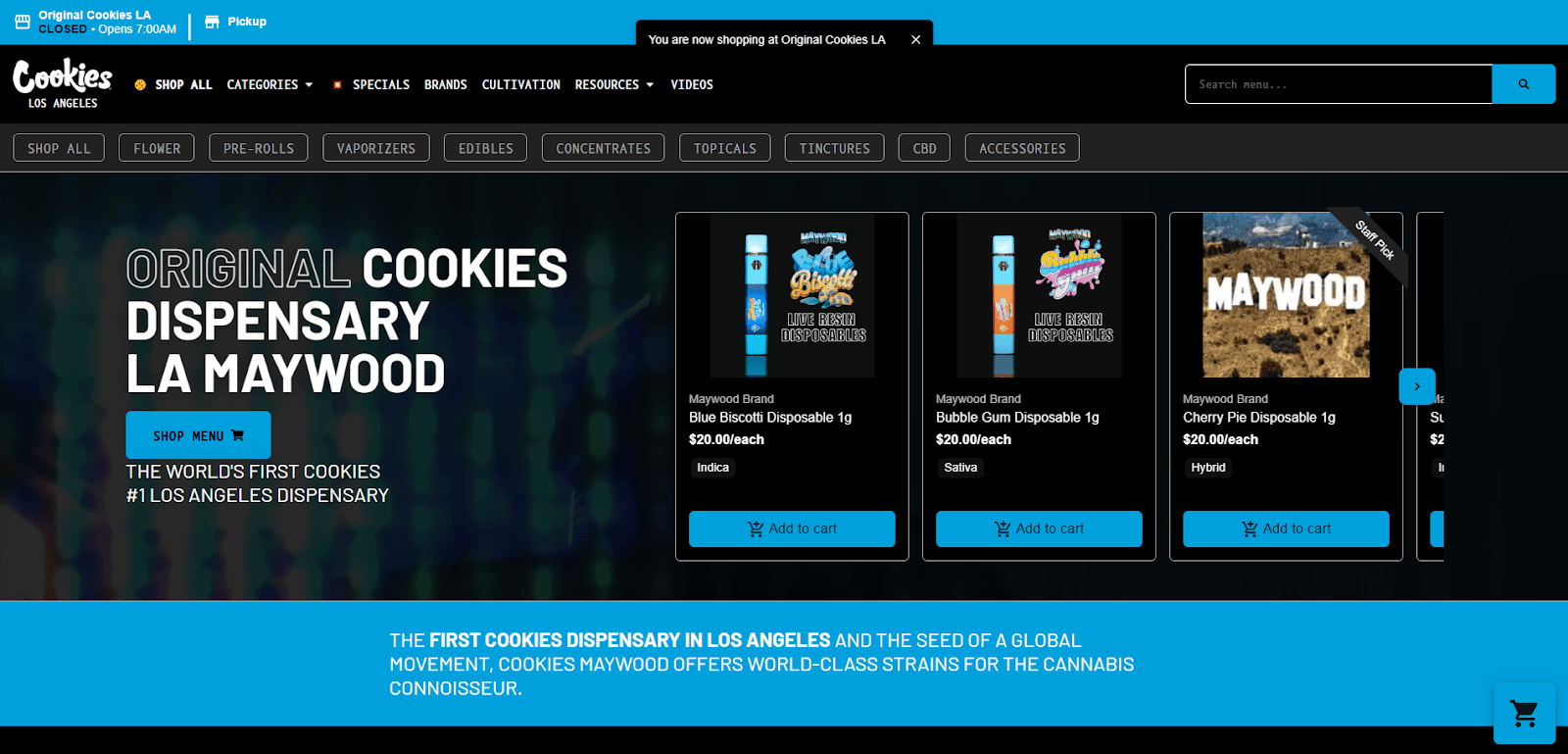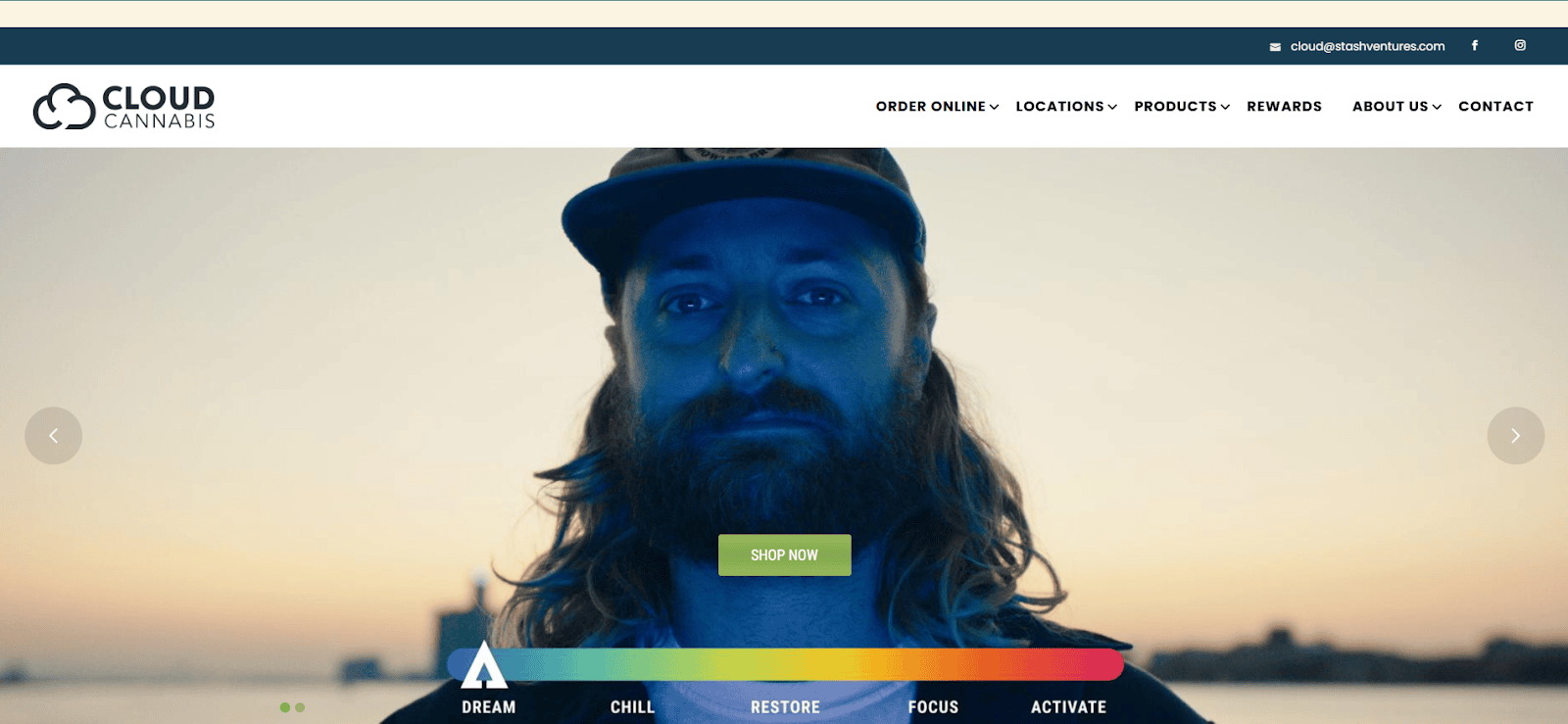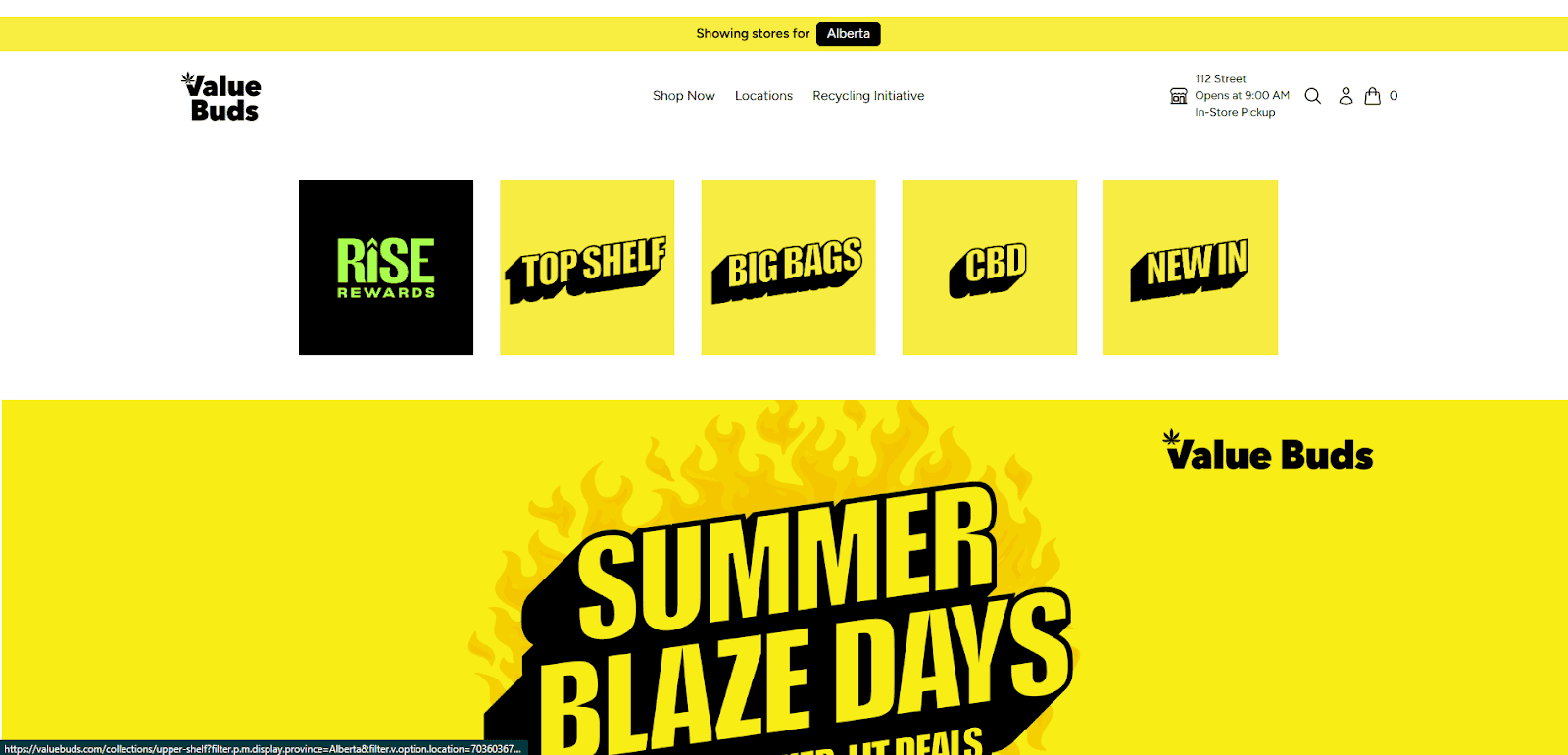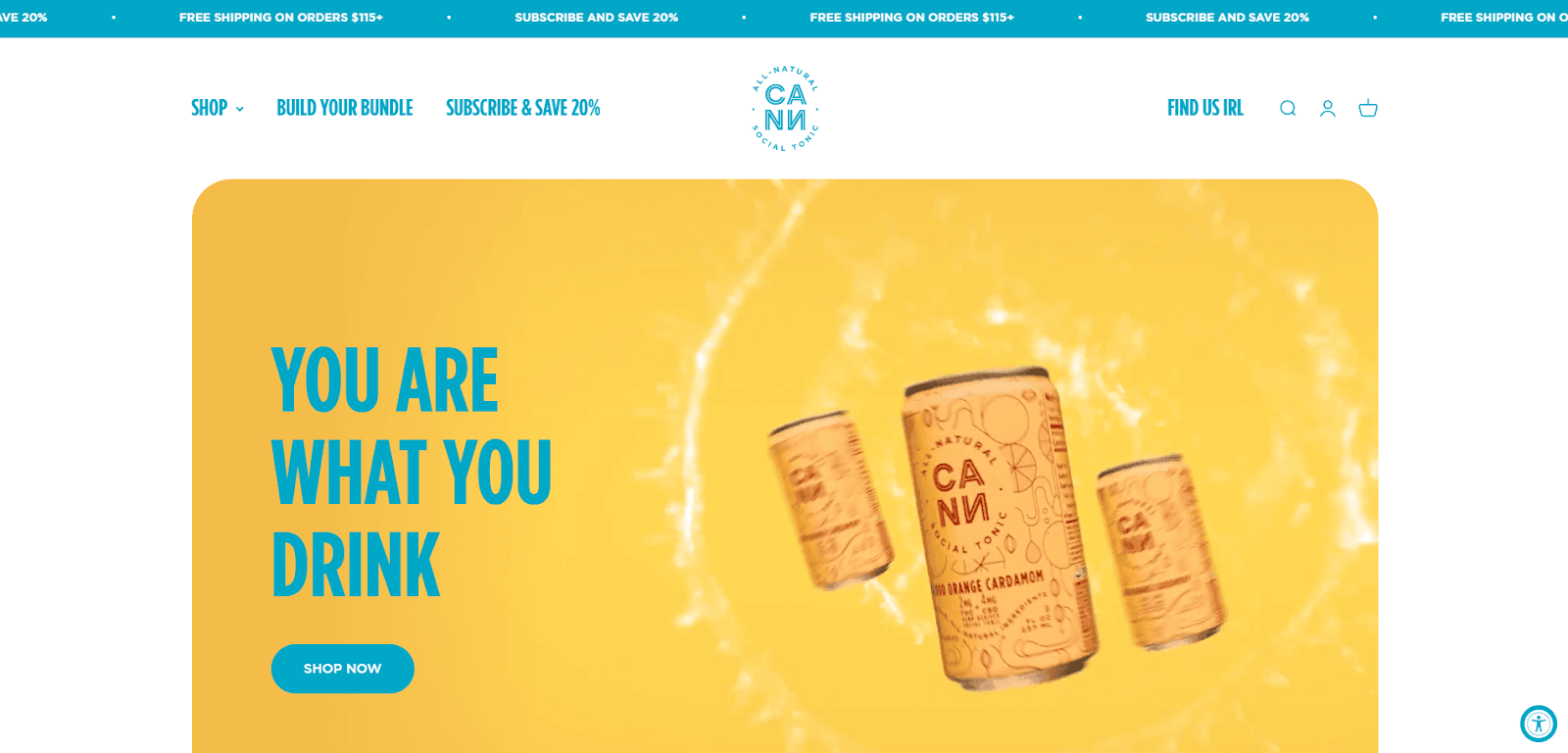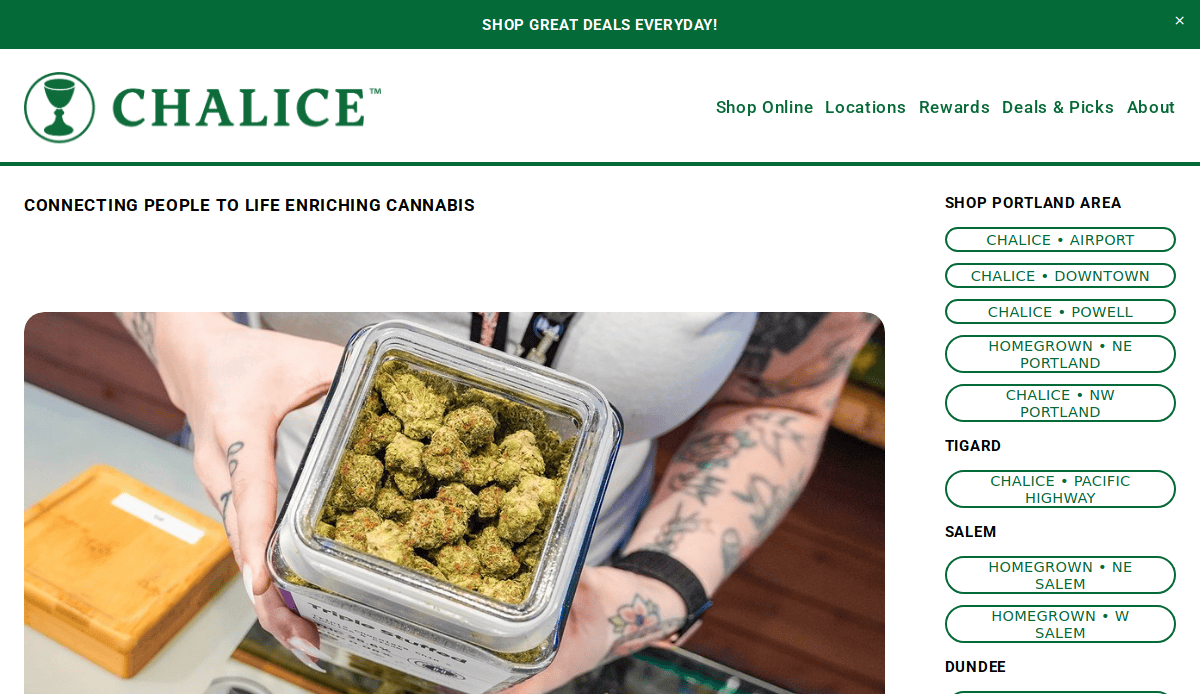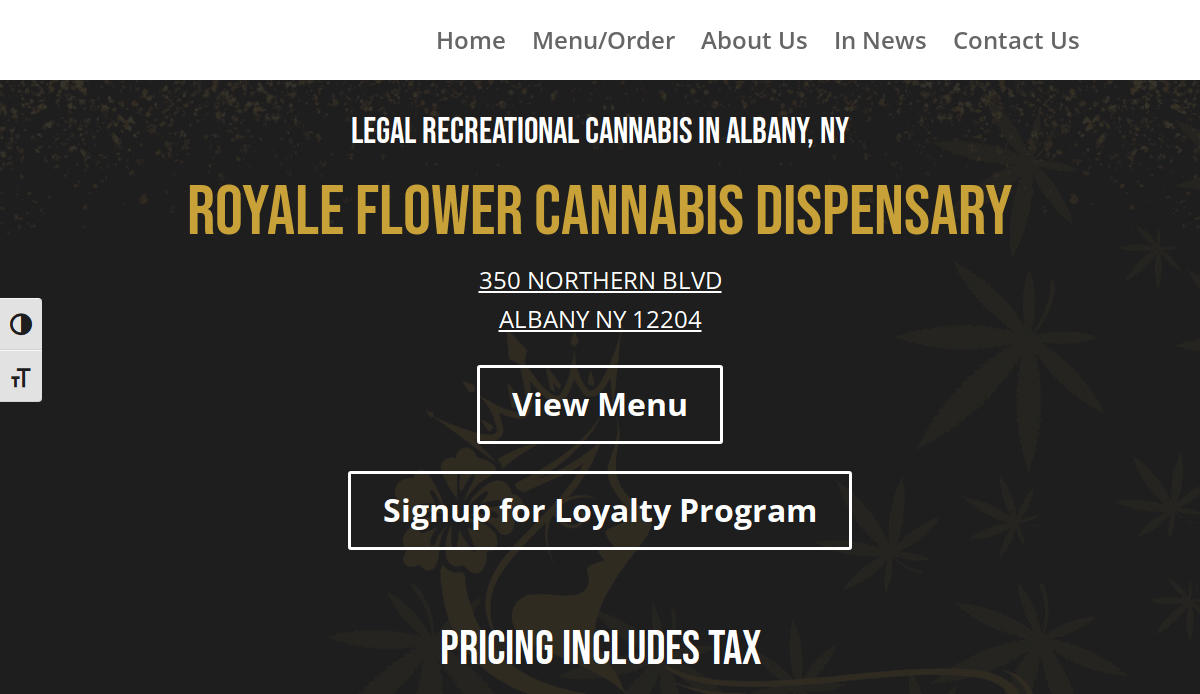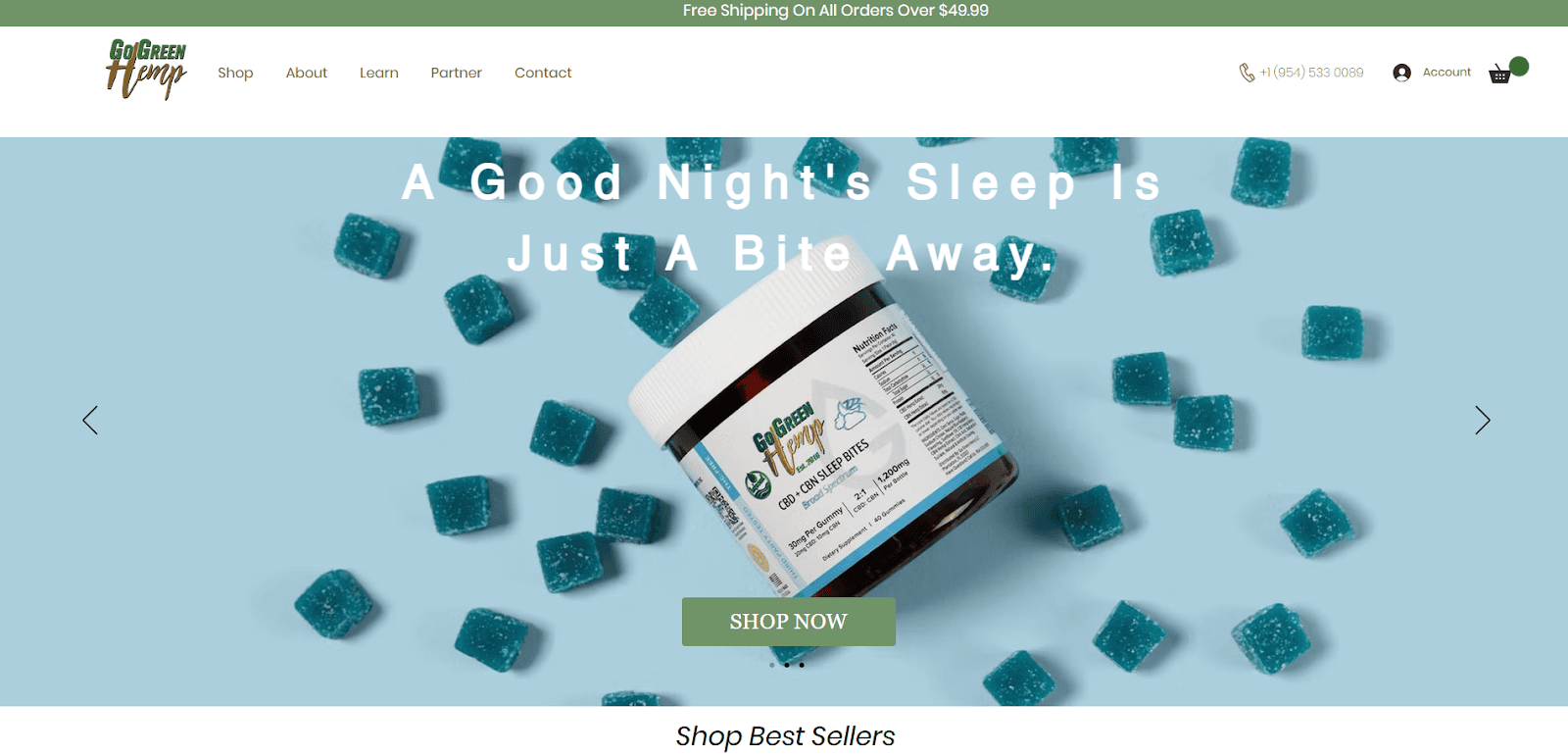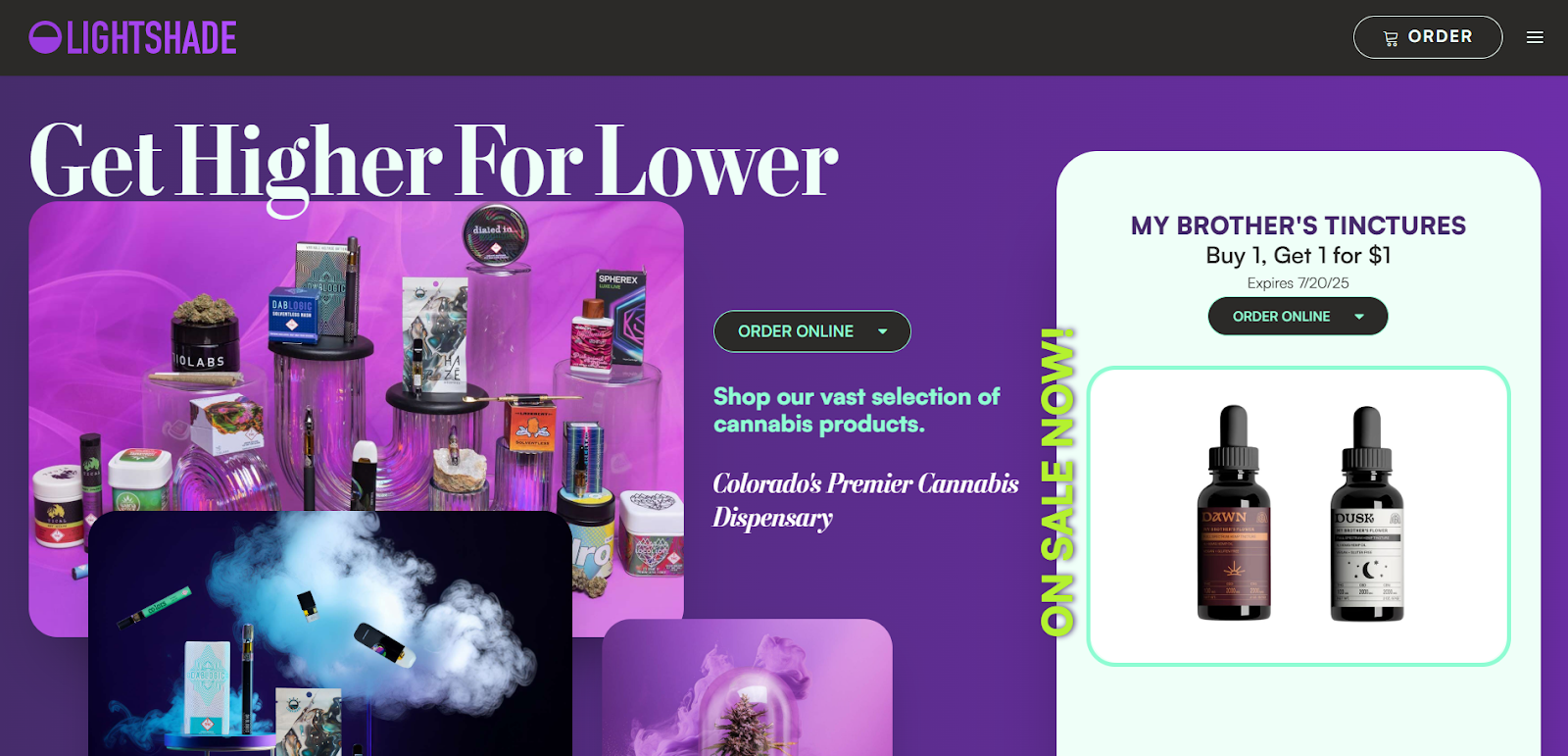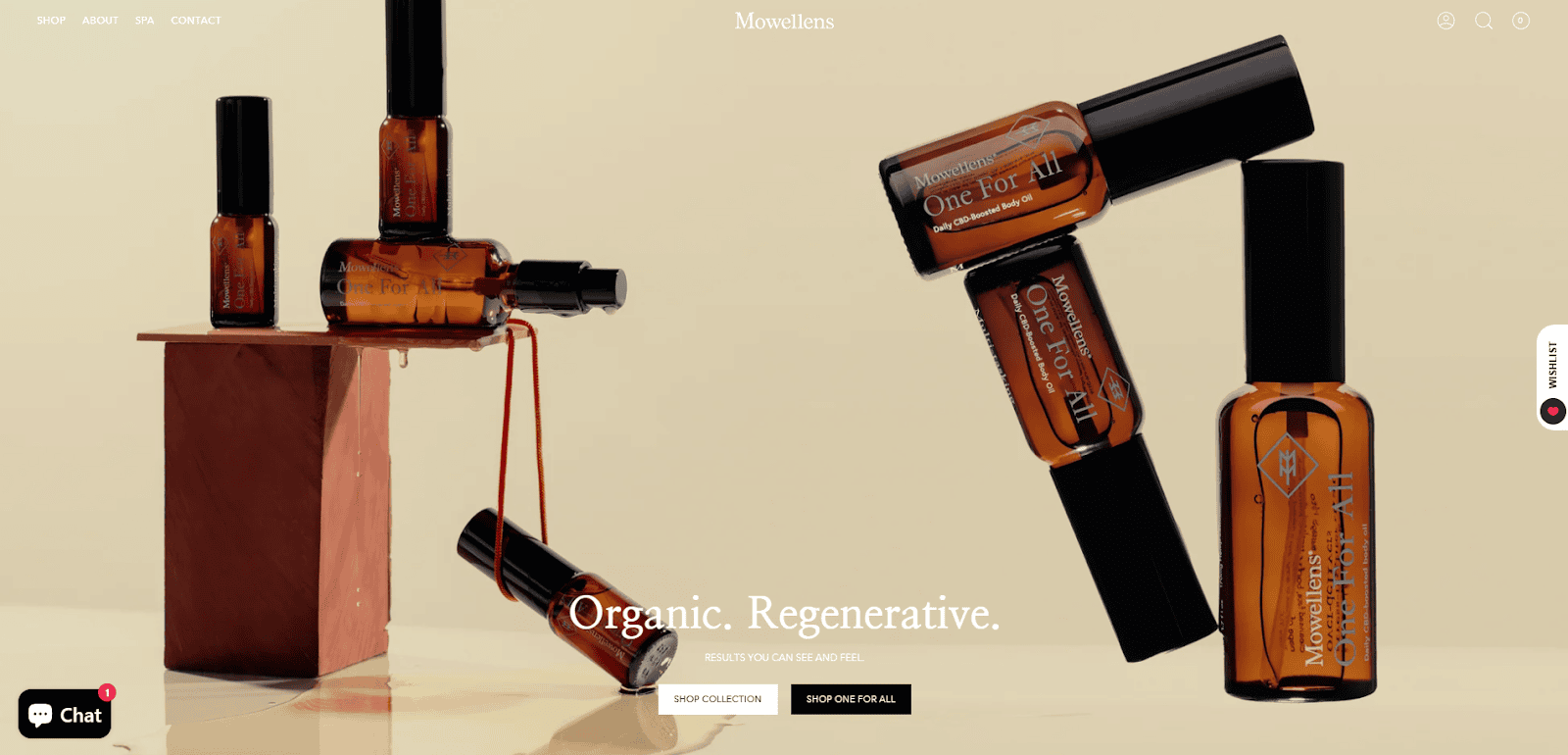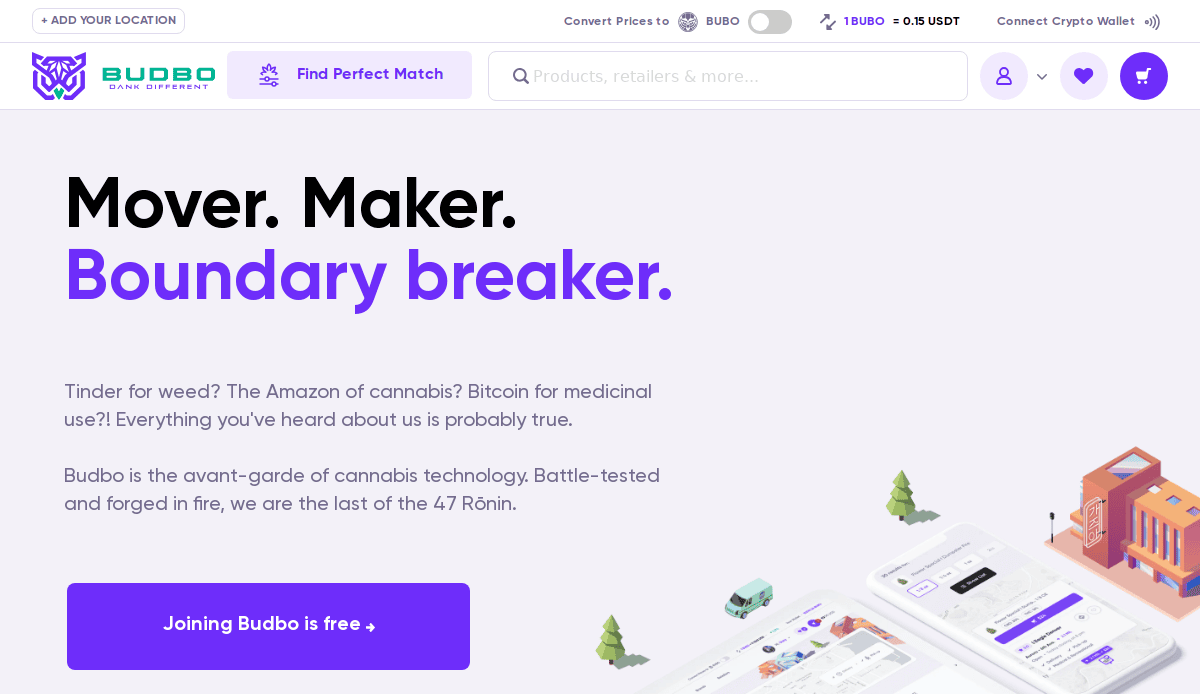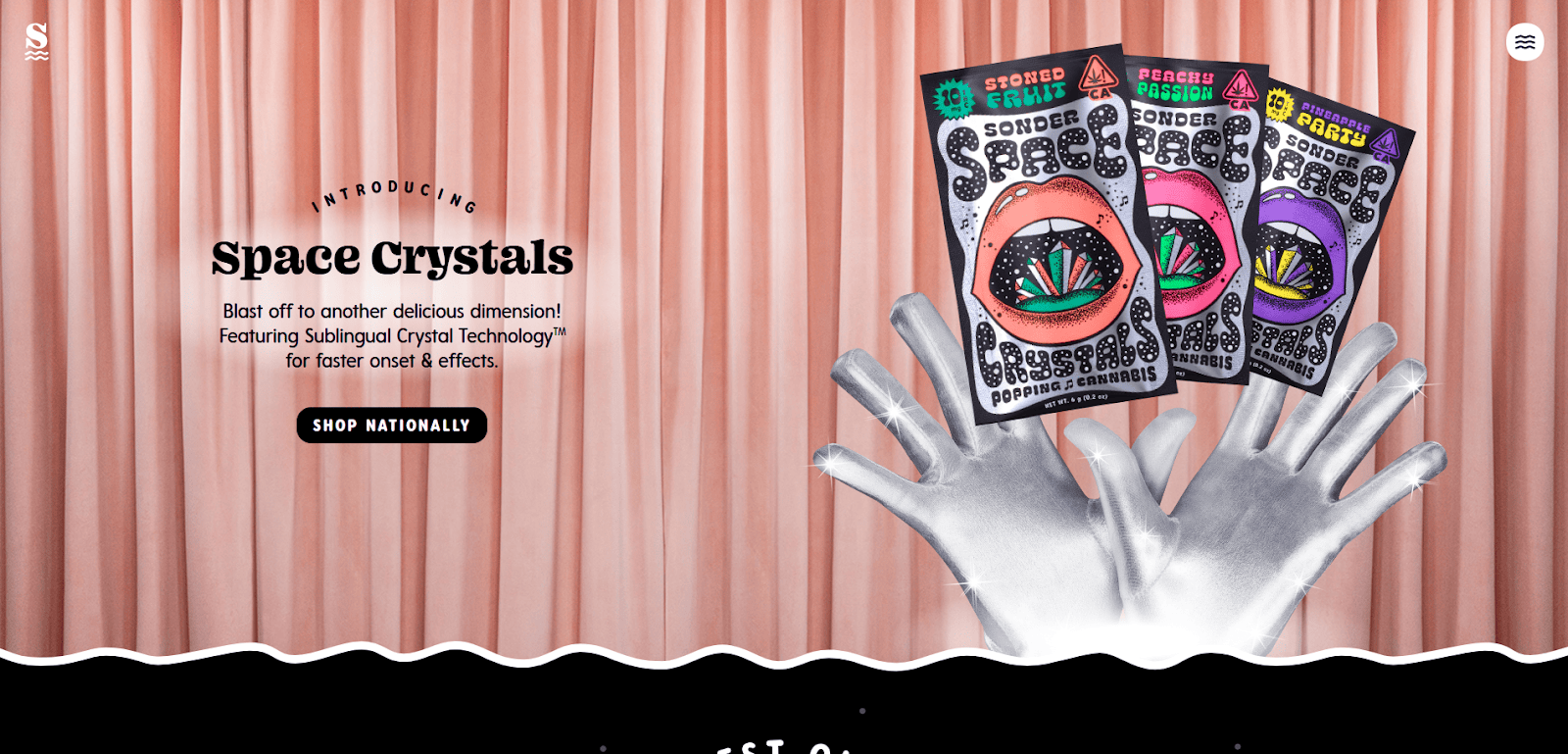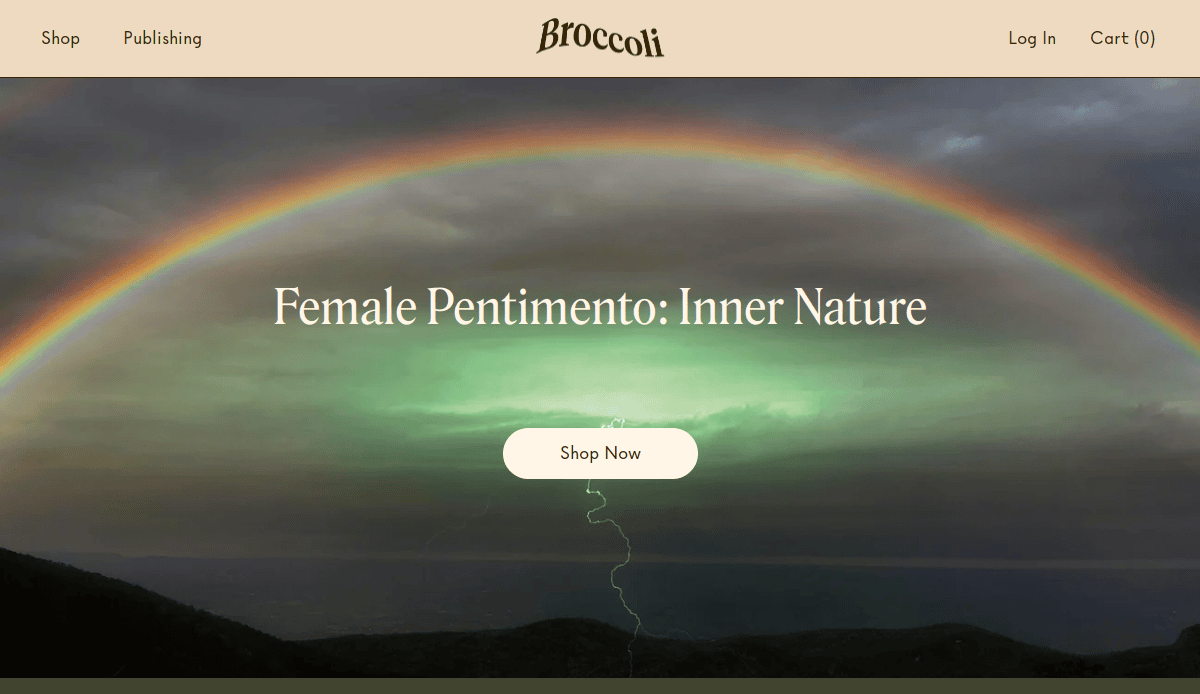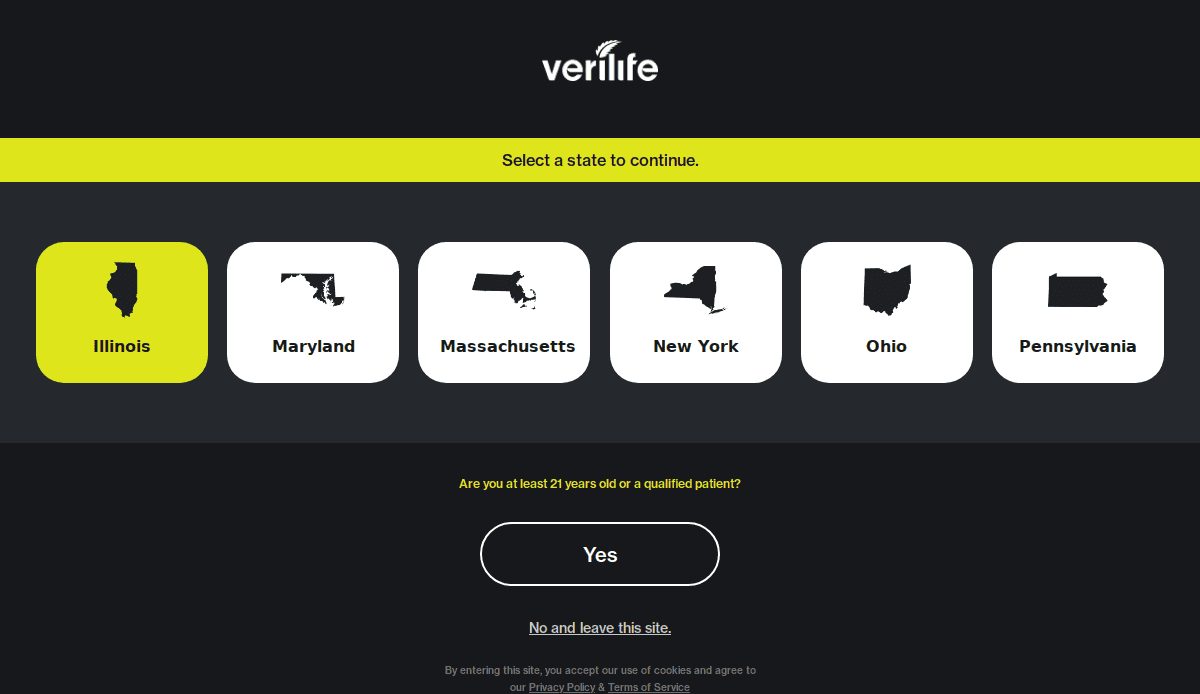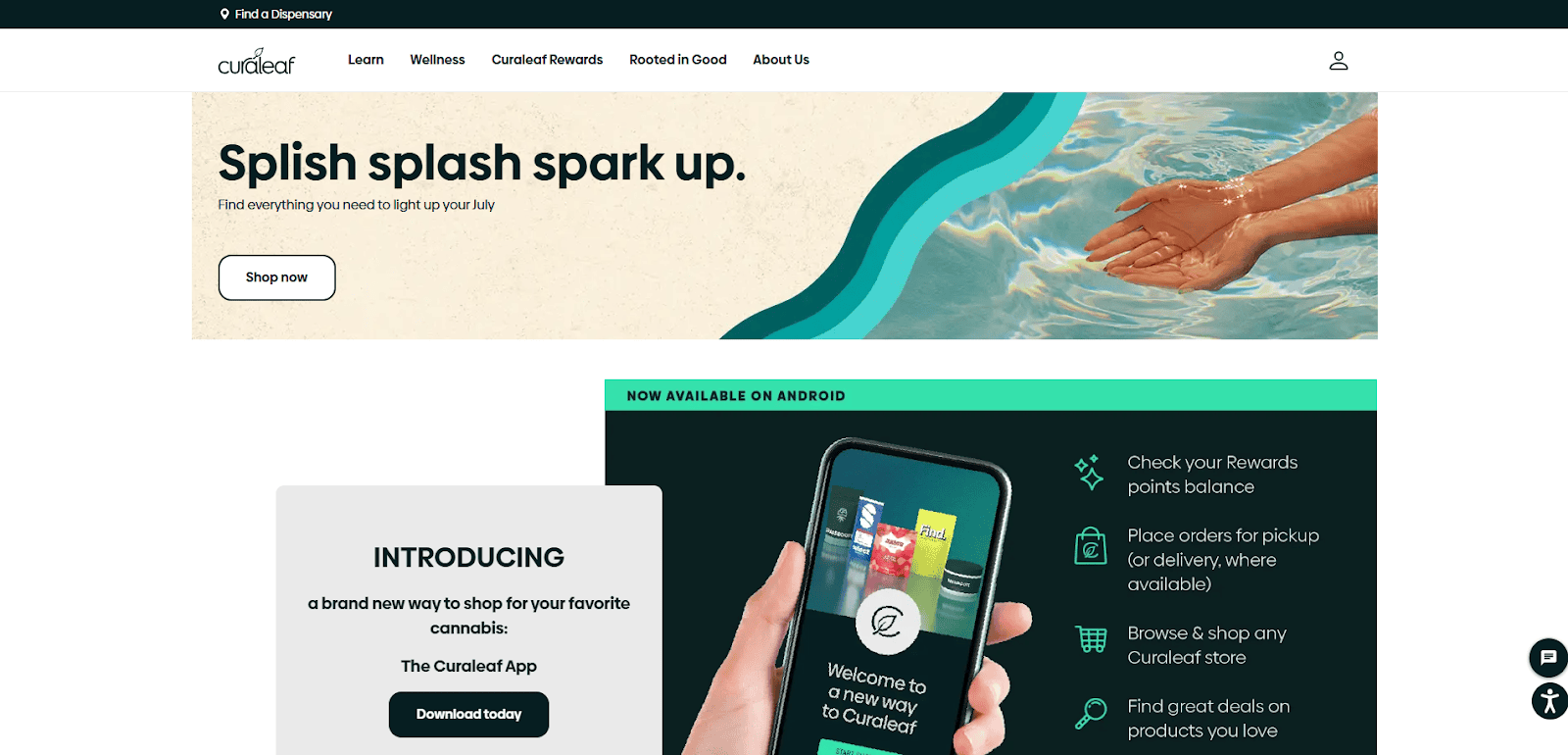Designing an effective dispensary website requires a strategic approach that balances user experience, compliance, and search engine optimization. Here are the essential takeaways to guide your website development:
- Prioritize User Experience (UX):
A user-friendly website with an intuitive design, fast loading times, and mobile responsiveness enhances customer satisfaction and retention. Implementing clear calls-to-action and streamlined checkout processes can significantly improve conversion rates. - Ensure Compliance and Accessibility:
Adhering to legal regulations, including age verification and ADA compliance, is crucial. Providing transparent information about products, such as ingredients and lab testing results, builds trust and meets compliance standards. - Optimize for Search Engines (SEO):
Incorporate relevant keywords, meta tags, and structured data to improve visibility in search engine results. Regularly updating content and maintaining a blog with educational resources can boost SEO performance. - Leverage Local SEO Strategies:
Optimizing for local search by claiming and updating your Google Business Profile, acquiring local backlinks, and including location-specific keywords helps attract nearby customers. - Integrate E-Commerce Functionality:
Offering online ordering and showcasing products with high-quality images and detailed descriptions provides convenience and encourages purchases. Ensure the e-commerce platform complies with state regulations. - Build Brand Identity and Trust:
Consistent branding across the website, including logos, color schemes, and messaging, reinforces brand recognition. Featuring customer testimonials and reviews can enhance credibility and trustworthiness. - Utilize Analytics and Continuous Improvement:
Implement analytics tools to monitor website performance, user behavior, and conversion rates. Use this data to make informed decisions and continuously improve the website’s effectiveness.
By focusing on these key areas, your dispensary website can effectively attract and retain customers, comply with regulations, and stand out in a competitive market.
Why Great Dispensary Website Design Matters More Than Ever
Today, cannabis is a competitive market, so your website is often the first—and sometimes only—interaction a potential customer has with your dispensary. As a result, a well-designed dispensary website isn’t just about looking good; it’s about delivering a seamless experience that guides your target audience from first click to final purchase.
From verification gates for user age to product menu layout, every element on a cannabis website influences how users perceive your cannabis brand. The right design builds trust, communicates compliance, and ultimately drives revenue. On the other hand, a slow, hard-to-navigate, or outdated website design can quickly erode confidence and send visitors to a competitor.
Your homepage needs to do more than introduce your dispensary—it should optimize user experience, showcase key cannabis products, and make it easy for users on smart devices to find what they need. Strategic navigation and on-site SEO techniques ensure your website isn’t just accessible—it’s also findable. When you combine aesthetic design with technical performance and search engine optimization, you turn your dispensary website into a high-performing, lead-generating engine.
Whether you’re launching a new dispensary or revamping an existing site, this guide will show you how to build a website that reflects your cannabis brand and converts visitors into loyal customers. From optimization strategies to compliance-ready e-commerce integrations, we’ll walk you through how to create a site that succeeds.
Website Planning & Purpose: Building the Foundation for a High-Performing Website
Before writing a single line of code or choosing a color scheme, a successful website begins with strategic planning. In the cannabis industry—where compliance, customer trust, and competitive positioning are crucial—the planning phase is what separates a high-performing website from one that underdelivers.
The first step is to define the website’s purpose. For most companies, the core goals include driving foot traffic to a physical location, supporting online orders through an e-commerce platform, educating visitors about cannabis products, and capturing leads through newsletters or contact forms. These goals shape every other decision, from site architecture to content strategy.
Next, identify the key actions you want users to take. Should they browse your pages, learn about strains, or find your store on Google Maps? Mapping these actions ensures that the layout and call-to-actions guide users intuitively toward those outcomes.
This is also the phase to gather legal requirements—age verification pop-ups, disclaimers, and accessibility compliance (ADA)—which are not optional in this industry. Planning for these elements early allows them to be integrated into the user experience rather than layered on as afterthoughts.
User personas play a key role as well. Understanding who your target audience is—whether it’s experienced cannabis consumers, curious newcomers, or medical patients—helps determine the right tone, layout, and content mix. These personas inform whether your site needs educational resources, robust product filtering, or a streamlined checkout process.
Finally, planning must account for future growth. This includes choosing a content management system like WordPress that allows for easy updates, scalability for expanding product categories, and flexibility for integrating future marketing tools. For a more detailed look at these foundational elements, we break down the core principles of effective design in this helpful guide: Core Principles of Web Design: A Guide for Beginners.
In a highly regulated and competitive space like the cannabis industry, a well-planned website is not just an advantage—it’s a necessity. By beginning with a clear purpose and structured roadmap, dispensaries can build websites that don’t just look great but perform where it counts: traffic, engagement, and conversions.
Design Principles for Effective Websites
A website must do more than look professional—it must function seamlessly, build trust instantly, and convert visitors into customers. To achieve that, design principles specific to the cannabis industry must be applied thoughtfully across every page.
The first principle is clarity. Visitors should immediately understand where they are, what the business offers, and how to take action. This means clear user gateways, intuitive layouts, and visible calls-to-action. A cluttered homepage or a buried product list can frustrate users and lead to high bounce rates. Instead, prioritize simplicity and visual hierarchy so users naturally follow the path to purchase or contact.
Next is consistency. A cohesive visual identity—from color palette and typography to button styles and iconography—reinforces brand recognition. Whether a customer visits your site on a desktop or mobile device, every page should look and feel like a unified experience. Consistency also builds trust, which is particularly important in an industry still working against outdated stigmas.
Responsiveness is essential. With more users browsing on smart devices, a dispensary website must be optimized for all screen sizes. Mobile-friendly layouts, touch-friendly menus, and fast-loading pages create a frictionless experience that encourages engagement and sales.
Accessibility is also non-negotiable. ADA-compliant websites ensure that all users—including those with disabilities—can navigate your site and access content. This includes proper color contrast, readable fonts, keyboard pathways, and descriptive alt text for images. Beyond legal compliance, accessibility is a reflection of a brand’s commitment to inclusivity and professionalism.
Another core principle is authenticity. High-quality visuals, original copywriting, and real customer testimonials help create a genuine connection. Stock photos and generic language are red flags for discerning consumers. Instead, use design to tell your brand’s story and show the faces and values behind the business.
Finally, prioritize conversion. Every design decision should support your business goals—whether it’s increasing foot traffic, boosting online orders, or growing your email list. Clear CTAs, strategic placement of trust signals like reviews or security badges, and a streamlined checkout experience all contribute to higher conversion rates.
By applying these principles, websites can deliver both style and substance, capturing attention, building confidence, and turning interest into measurable growth.
Content & Navigation: Structuring Websites for Engagement and Ease
These two nuances are the backbone of any website. If visitors can’t find what they’re looking for within a few seconds—or if what they do find feels vague, outdated, or hard to read—they’re likely to leave without taking action. In the cannabis industry, where users often arrive with specific goals like browsing products or checking store hours, content clarity and intuitive design are critical.
Start with your homepage. It should immediately tell users who you are, what you offer, and what actions they can take next. Keep the content concise and focused. Include a brief intro, a featured product or two, customer reviews, and a prominent call-to-action. Avoid overwhelming users with dense paragraphs; instead, use short sections, headings, and icons to guide them visually.
One of the most important content hubs is your product pages. These should be accessible from the main page and easy to filter by category, like flower, edibles, tinctures, or accessories. Product pages should include high-quality images, detailed descriptions, and essential information such as potency, ingredients, and pricing. If you offer online ordering or delivery, clearly label which items are available and how to purchase them.
Supporting pages are equally important. An About page builds trust and gives your cannabis brand a personality. An FAQs page helps reduce customer service inquiries while demonstrating authority. Blog content can boost search visibility and educate potential customers. Consider articles on product types, consumption methods, and safe usage tips. For inspiration on content and site layout, check out this curated list of the best cannabis websites to see how top dispensaries organize their information effectively.
Navigation should be kept simple and predictable. Limit top-level items to the essentials: Home, About, Blog, and Contact. Use dropdowns if necessary, but avoid over-nesting. Include a sticky header or hamburger menu on mobile devices to keep pages accessible at all times.
Footer menus are also a smart place to include store hours, location details, legal disclaimers, and links to privacy policies. These are expected by users and can improve both SEO and compliance.
In this industry, content needs to do more than fill space—it must be purposeful, easy to scan, and aligned with the needs of both new and returning visitors. When paired with an intuitive design, your content becomes a powerful tool that educates users, supports conversions, and reinforces the credibility of your dispensary.
Visual Elements: Elevating User Experience and Brand Identity
Visual elements do far more than decorate—they play a pivotal role in shaping first impressions, guiding their journey, and building trust. In the cannabis industry, where aesthetics and credibility influence purchasing decisions, strategic use of visuals can make or break the user experience.
High-quality product photography is non-negotiable. Whether showcasing flowers, edibles, or wellness-focused cannabis products, your images should be clear, well-lit, and consistent across the site. Customers want to see what they’re buying, and visuals help bridge the gap between digital browsing and in-store experience. If possible, use multiple angles and zoom features to enhance product pages and reinforce transparency.
Lifestyle imagery also matters. Real photos of your store, team members, or happy customers help humanize your brand. Avoid overly generic stock photos, which can erode authenticity. Instead, invest in custom imagery that aligns with your brand values—whether that’s wellness, sophistication, inclusivity, or community.
Your color palette and typography should also reflect your cannabis brand. Muted greens and neutrals often work well in this industry, but modern dispensaries are also embracing bold color schemes to stand out. Font choices should be clean and readable, especially on mobile devices, where screen real estate is limited.
Icons and illustrations serve a dual purpose: they break up text-heavy sections and improve navigation. Use recognizable icons for categories like flower, concentrates, and topicals, or to highlight features such as delivery availability or age.
Animations and micro-interactions—such as hover effects, progress bars, or slide-in messages—can improve engagement when used sparingly. These subtle cues guide users, reinforce actions, and create a more dynamic experience without overwhelming the page.
Video can be a powerful storytelling tool, especially on homepages or About pages. A short welcome video or tour of your store adds personality and helps build trust quickly. Just ensure videos are optimized for fast loading and don’t auto-play with sound, which can be intrusive.
To see real examples of effective cannabis visual storytelling, explore this roundup of the best CBD website designs. These sites demonstrate how color, layout, photography, and interactive features work together to convey professionalism and credibility.
Ultimately, visual elements should support—not distract from—your website’s core goals. Every image, color, and icon must serve a purpose: to guide users, represent your brand, and enhance the overall user experience from the first impression to final conversion.
Ongoing WordPress Maintenance for Websites
Launching a website is only the beginning. To keep it secure, fast, and optimized for growth, ongoing WordPress maintenance is essential. This is especially true for cannabis businesses, which often rely heavily on online traffic, real-time menu updates, and secure e-commerce transactions.
Security updates are a top priority. The cannabis industry is no stranger to digital threats, and a compromised website can quickly damage trust with potential customers. WordPress regularly releases updates to fix vulnerabilities. If these are not applied promptly, your site becomes an easy target. Plugins and themes must also be kept up to date to prevent compatibility issues and protect sensitive data.
Website speed directly impacts user experience and SEO. Regular maintenance includes optimizing images, cleaning up databases, and checking for broken links—all of which help maintain fast load times. When your site loads slowly, visitors drop off and search engine rankings suffer. Keeping your WordPress installation lean and well-tuned keeps performance consistent across devices.
Backups are non-negotiable. A proper maintenance plan includes scheduled backups so you can restore your website quickly in case of unexpected issues. Whether it’s a plugin conflict, server crash, or human error, regular backups ensure you’re never starting from scratch.
Content updates also fall under ongoing maintenance. Product menus, pricing, hours of operation, and blog content should be reviewed and refreshed routinely. For dispensaries, staying accurate and compliant is especially important—outdated THC percentages or incorrect age restriction notices can cause customer confusion or regulatory problems.
Monitoring uptime and functionality is another critical piece. Automated tools can alert you if your site goes down or experiences bugs, but someone still needs to act on those alerts. A proactive maintenance team ensures your website is always live, functioning properly, and providing a seamless experience for every visitor.
Search engine optimization benefits from regular maintenance as well. Keeping technical SEO elements like sitemaps, meta descriptions, and schema markup up to date supports long-term visibility. Google favors active, well-maintained sites that show ongoing investment in quality and relevance.
Ongoing WordPress maintenance is not just a behind-the-scenes task—it’s a foundational service that keeps your dispensary’s online presence strong, secure, and ready to grow. Without it, even the best-designed website will fall behind and fail to deliver the consistent experience that cannabis customers expect.
Best Dispensary Website Examples
Here are 20 standout cannabis websites in the U.S., each exemplifying excellence in design, user experience, and brand storytelling.
1. Sunnyside
Location: Chicago, IL
Key Takeaways:
- Bright, cheerful color palette that enhances user engagement.
- Streamlined navigation with clear product categorization.
- Responsive design ensures seamless experience across devices.
2. Cookies
Location: Los Angeles, CA
Key Takeaways:
- Bold blue-and-white color scheme that differentiates the brand.
- Integration of music and culture reflecting the founder’s background.
- High-quality visuals and straightforward navigation enhancing UX.
3. Mango Cannabis
Location: Oklahoma City, OK
Key Takeaways:
- Clean, modern design with a bright color palette.
- Informative product details aiding customer decisions.
- Simple, accessible navigation improves user journey.
4. Cloud Cannabis
Location: Muskegon, MI
Key Takeaways:
- Soft blue-and-white palette creating a calming effect.
- AI-powered strain recommendations personalizing the shopping experience.
- Clear navigation and high-quality visuals enhancing usability.
5. Superette
Location: Toronto, ON
Key Takeaways:
- Playful design elements like interactive features engaging users.
- Unique branding that stands out in the cannabis market.
- User-friendly interface facilitating easy navigation.
6. Cann
Location: Los Angeles, CA
Key Takeaways:
- Vibrant design reflecting the brand’s social and fun image.
- GSAP animation and bold typography enhancing user engagement.
- Clear product information aiding customer understanding.
7. Chalice Farms
Location: Portland, OR
Key Takeaways:
- Calming, wellness-focused design appealing to health-conscious consumers.
- Diverse content including magazine, blog, and videos enriching user experience.
- Clean and simple navigation improves usability.
8. Royale Flower Cannabis Dispensary
Location: Albany, NY
Key Takeaways:
- First woman-owned dispensary in New York’s Capital Region, emphasizing community involvement and empowerment.
- Boutique-style environment with a welcoming lounge area, encouraging customers to explore and interact.
- Dedicated “women’s wall” showcasing products from female-owned brands across New York State.
9. GoGreen Hemp
Location: Fort Mill, SC
Key Takeaways:
- Delightful and navigable design improving overall visitor experience.
- Product display on an orange background capturing attention.
- Slideshow of testimonials building trust with customers.
10. Pepper Lee CBD
Location: Austin, TX
Key Takeaways:
- Clean and simple design appealing to users.
- Clutter-free layout aligning with essential web content.
- Blend of white, cream, and black color schemes creating a sophisticated outlook.
11. Lightshade
Location: Denver, CO
Key Takeaways:
- Modern web design combines visual appeal with user-friendly functionality.
- Informative product descriptions emphasizing unique characteristics.
- Clear call-to-action buttons directing customers effectively.
12. D8 Austin
Location: Austin, TX
Key Takeaways:
- Attractive and resourceful eCommerce website design.
- Shades of purple influencing web visuals and giving a grand outlook.
- Animated images and interactive maps enhance user engagement.
13. Mowellens
Location: Los Angeles, CA
Key Takeaways:
- Phytomedicine-based brand offering high-quality cannabinoid products.
- Use of visuals to narrate the brand’s expertise.
- Clean and modern design appealing to users.
14. Budbo
Location: Newport Beach, CA
Key Takeaways:
- Blockchain-powered solutions tracking the cannabis supply chain.
- Fixed portal login helping users explore the site.
- Fixed header menu featuring brand logo, cart, and search bar.
15. Houseplant
Location: Los Angeles, CA
Key Takeaways:
- Minimalist design reflecting the brand’s aesthetic.
- High-quality imagery showcasing products effectively.
- User-friendly interface facilitating easy navigation.
16. Sonder
Location: Oakland, CA
Key Takeaways:
- Inclusive branding reflecting the company’s values.
- Creative design elements engaging users.
- User-friendly layout enhancing navigation.
17. Broccoli Magazine
Location: Portland, OR
Key Takeaways:
- Artistic design appealing to a niche audience.
- High-quality content focusing on cannabis culture.
- Clean layout enhances readability.
18. The Hempest
Location: Boston, MA
Key Takeaways:
- Eco-friendly branding emphasizing sustainability.
- Informative content educating users on hemp products.
- Simple design facilitating easy navigation.
19. Verilife
Location: Chicago, IL
Key Takeaways:
- Sleek black-and-white color scheme creating a modern look.
- Empowering messages resonating with users.
- Good copywriting enhancing user engagement.
20. Curaleaf
Location: Wakefield, MA
Key Takeaways:
- Comprehensive product range catering to diverse preferences.
- Community-focused content connecting with users.
- Responsive design ensures seamless browsing on any device.
These websites exemplify the best practices in cannabis web design, offering inspiration for creating a professional, user-friendly, and compliant online presence in the cannabis industry.
Ready to Take Your Cannabis Website to the Next Level?
If you’re serious about growing your cannabis business, your website can’t be an afterthought—it’s your most powerful sales tool in a highly competitive cannabis market. Whether you’re launching a new store or scaling your cannabis dispensary website to support more online traffic and orders, the right foundation and design elements can make all the difference.
A successful cannabis website involves more than a sleek look. It needs to be compliant, responsive, easy to navigate, and optimized for both users and search engines. From structuring your online menu to integrating secure e-commerce features, every piece of your website design and development should serve a purpose. If you’re looking to create a dispensary website that connects with your audience and converts visitors into customers, now is the time to take action.
As a top-tier digital marketing agency, we specialize in website development that works—responsive design, professional website builds, and strategic guidance tailored for cannabis dispensaries. Let’s talk about how we can help you design a dispensary website that supports your business and your customers from the first visit to online sale.
Request your custom cannabis website strategy today!
FAQs About Cannabis Website Design
What makes marijuana website design different from other industries?
Marijuana website design must meet a unique combination of user expectations, compliance requirements, and e-commerce functionality. Cannabis retailers need to accommodate regulations around age verification, restricted marketing channels, and secure online shopping. The website’s design must also support educational content, showcase cannabis products clearly, and offer intuitive pathways to order online. All of this should be wrapped in a responsive design that works well on mobile.
How can I ensure my website is compliant?
To maintain a compliant website, your cannabis business should include the verification of the visitor’s age, clear disclaimers, ADA accessibility features, and updated legal information for your jurisdiction. Working with a design firm experienced in cannabis web design helps ensure your cannabis dispensary website aligns with best practices and remains protected from regulatory issues.
Do I need a custom website, or can I use a website builder?
While website builders may seem convenient, they often lack the flexibility and compliance features needed for cannabis companies. Custom website development offers full control over the design of the website, functionality, and integrations—especially critical for cannabis retail operations. A custom build ensures your site reflects your brand, accommodates regulations, and can scale with your growth.
What should be included in the website content for a cannabis retailer?
Effective website content for cannabis dispensaries includes detailed product pages, a searchable online store or menu, educational resources, and clear business information. Content should speak to recreational or medical marijuana users alike, answering their questions and easing their buying journey. Content also plays a key role in SEO, helping your business website rank in search engines and reach a broader audience.
How do I make sure my site works well on mobile?
Use responsive design to ensure your site automatically adjusts to different screen sizes. Most online shopping and browsing now happens on smartphones, so a responsive website helps you capture that traffic and deliver a better experience. From simplified navigation to mobile-friendly buttons and image optimization, every element must be designed to work well on mobile.
How do I keep my website secure?
A secure website uses SSL encryption, regular plugin updates, and routine backups to help protect your website and data. For cannabis retailers managing sensitive customer information and online payments, these protections are critical. Our WordPress maintenance services include all of these elements to keep your website safe and fully functional.
Why is website speed important for cannabis businesses?
Speed affects everything from bounce rates to online sales. If your marijuana dispensary site takes too long to load, customers will leave, often before viewing your menu or products. Optimized images, efficient code, and clean hosting all contribute to a functioning website that converts visitors into buyers.
What pages should every professional website include?
At minimum, it should include: Home, Shop or Menu, About, Contact, FAQs, and a Blog. These pages support both search engine visibility and user navigation. Including educational content in your blog builds trust and reinforces your authority in the cannabis space.
Can I sell cannabis products directly on your website?
Cannabis e-commerce functionality depends on your state’s laws and the platform you choose. In some markets, cannabis companies can offer online ordering and allow users to purchase online for in-store pickup or delivery. Make sure your website includes an online store or menu that meets legal standards and offers a smooth experience for users who want to order online.
How can I drive more traffic to my website?
Driving traffic requires a blend of technical SEO, engaging content, and off-site promotion. Updating your website content regularly, using relevant keywords, and building backlinks are foundational practices for cannabis marketing professionals. Consider adding educational blogs, product highlights, and partnerships within the cannabis community to expand your reach.

